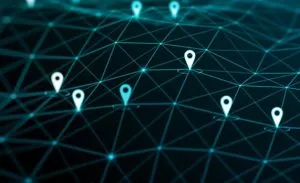To this end, it has signed an agreement with Leonardo to research and develop Machine Learning (ML) techniques to help better steer antenna arrays to block out unwanted signals.
CRPA
External interference, such as jamming and spoofing, increasingly threatens to disrupt access to critical satellite-based navigation. As a response, ESA is investigating smarter antenna designs. For example, Controlled Reception Pattern Antennas (CRPAs) and the use of beamforming.
Whereas conventional antennas catch signals from all directions, a CRPA can focus on specific signals. Those coming from specific satellites, perhaps, or ignoring signals or interference coming from other directions.
“By combining our expertise with Leonardo advanced technologies, we are reinforcing our commitment to resilient, interference-resistant satellite navigation of the future,” said Head of Future Navigation Department at ESA, Marco Falcone.
Antenna array
Specifically, Leonardo will explore reducing the distance between antenna elements. This will help reduce the size and weight of the antenna array.
It will also investigate the use of Machine Learning to both determine optimum antenna setups and adjust the settings faster. The ESA anticipates this will lead to smaller and smarter antennas, especially useful in space-limited environments such as aircraft.
The ESA adds:
“The project covers identification of the smarter algorithm for signal blocking, building and testing a real-time receiver demonstrator based on the selected algorithm, and comparing it to conventional larger antennas. The aim is to reach a Technology Readiness Level (TRL) of 4, delivering a lab-tested technology by the end of the project, in two years.”
GNSS NAVISP
The contract with Leonardo was signed at the recent Paris Air Show, in Le Bourget. And ELT Group will also be a subcontractor.
The project will be developed under the umbrella of ESA’s Navigation Innovation Support Programme (NAVISP). You can find out more about NAVISP on this dedicated ESA webpage.
Image: ESA
See also: ESA selects Novocomms for space SOOP positioning initiative

